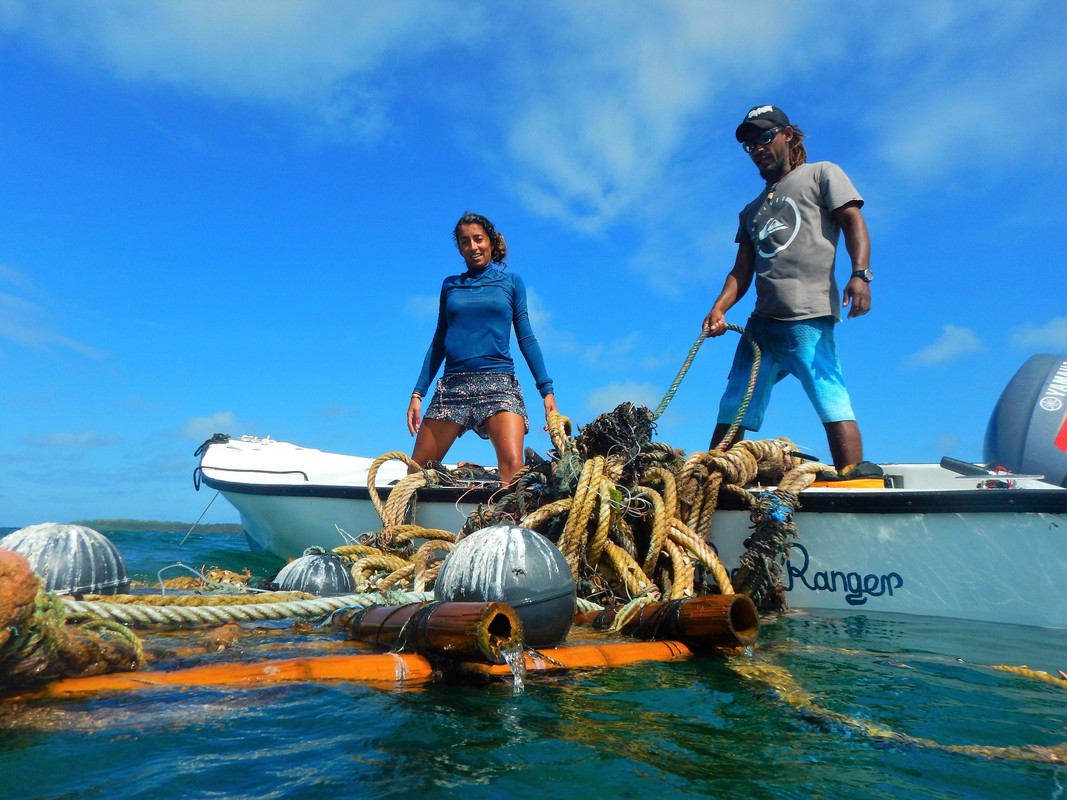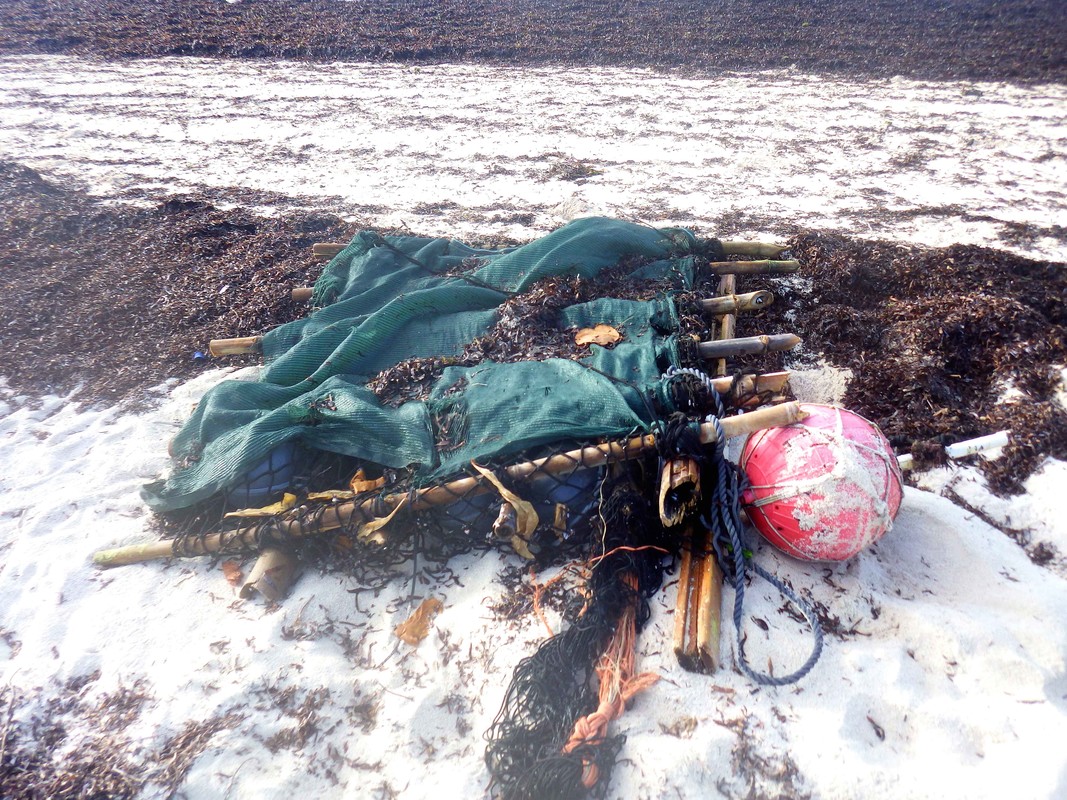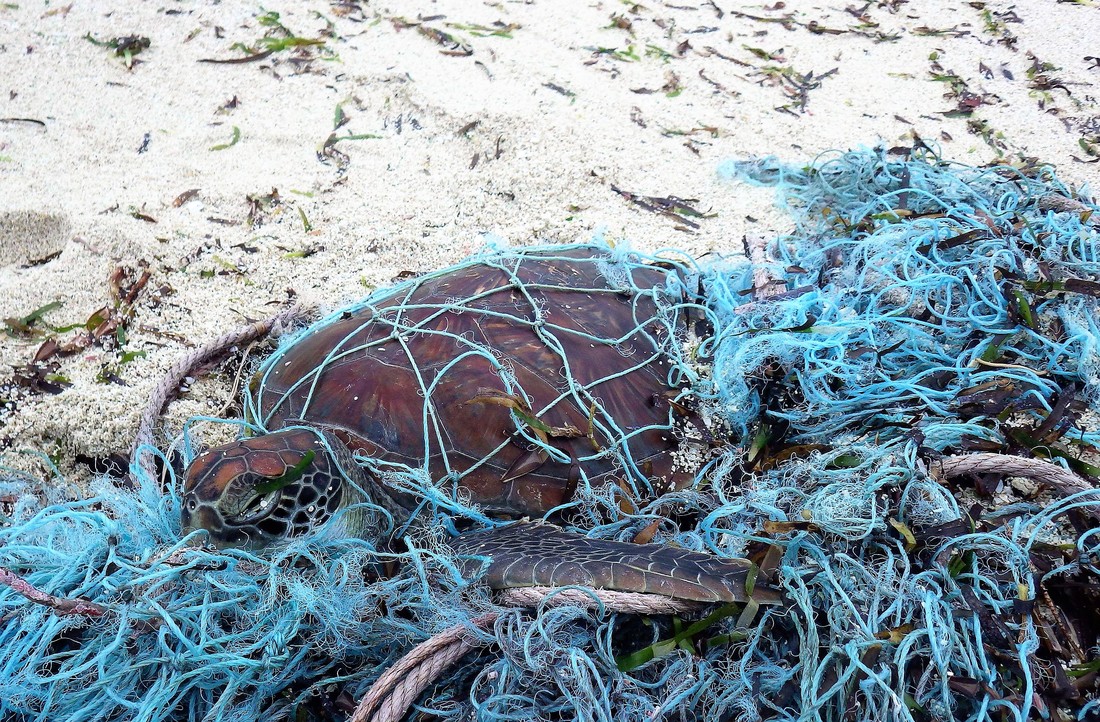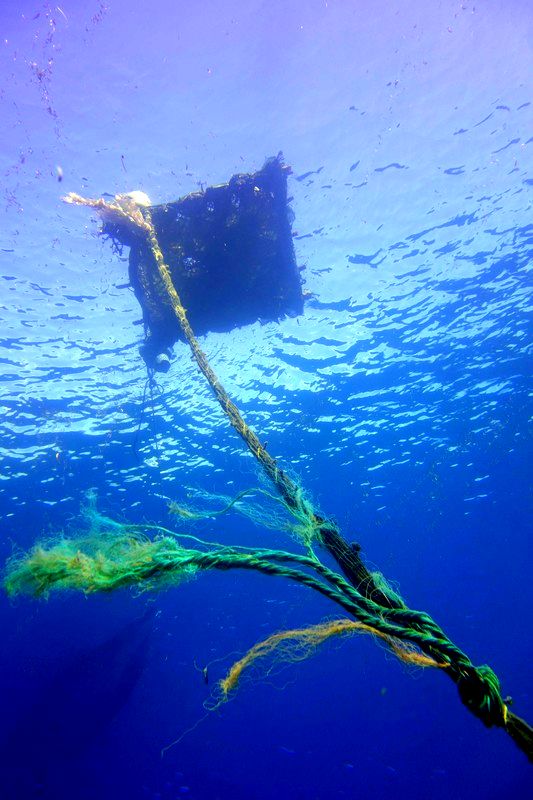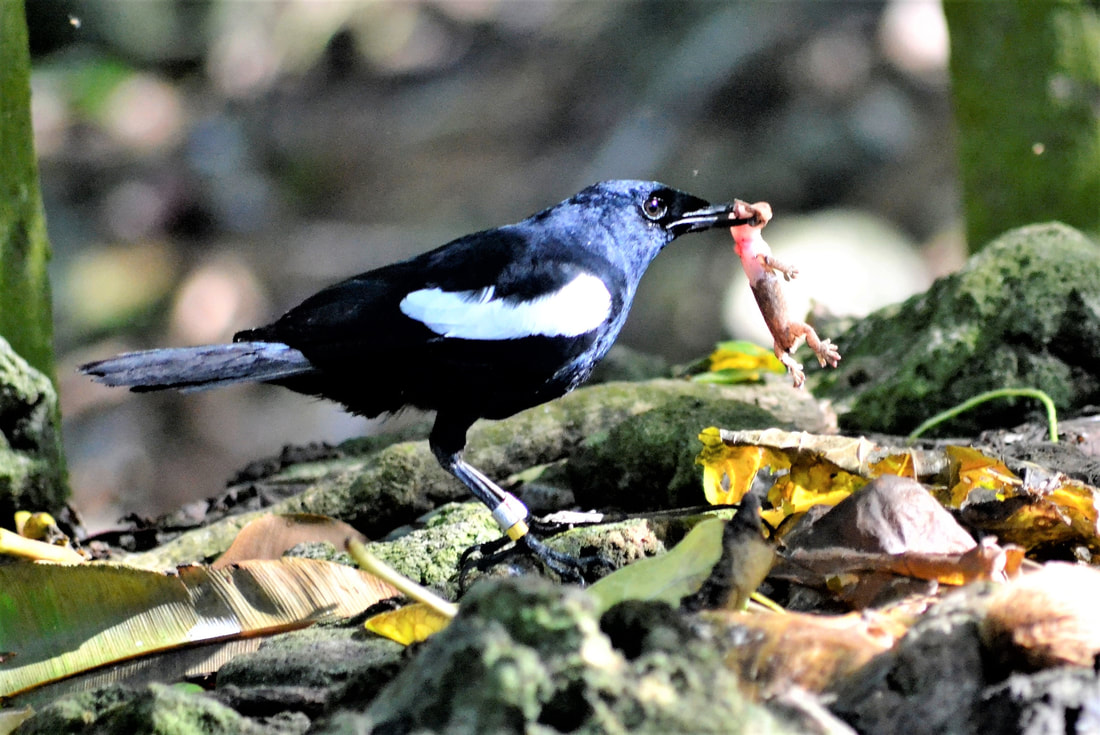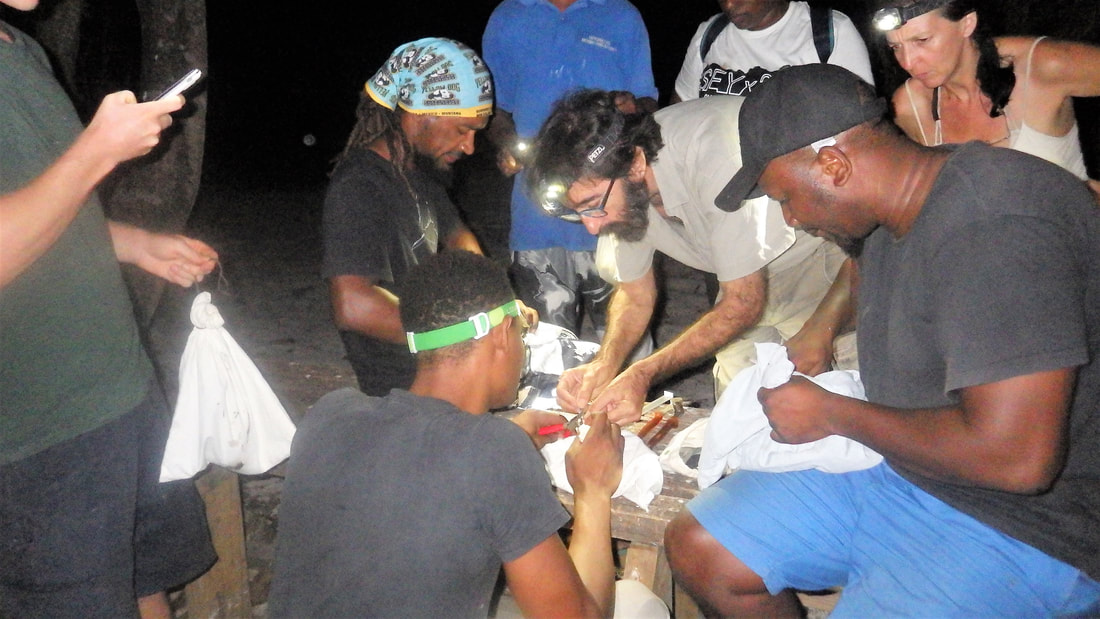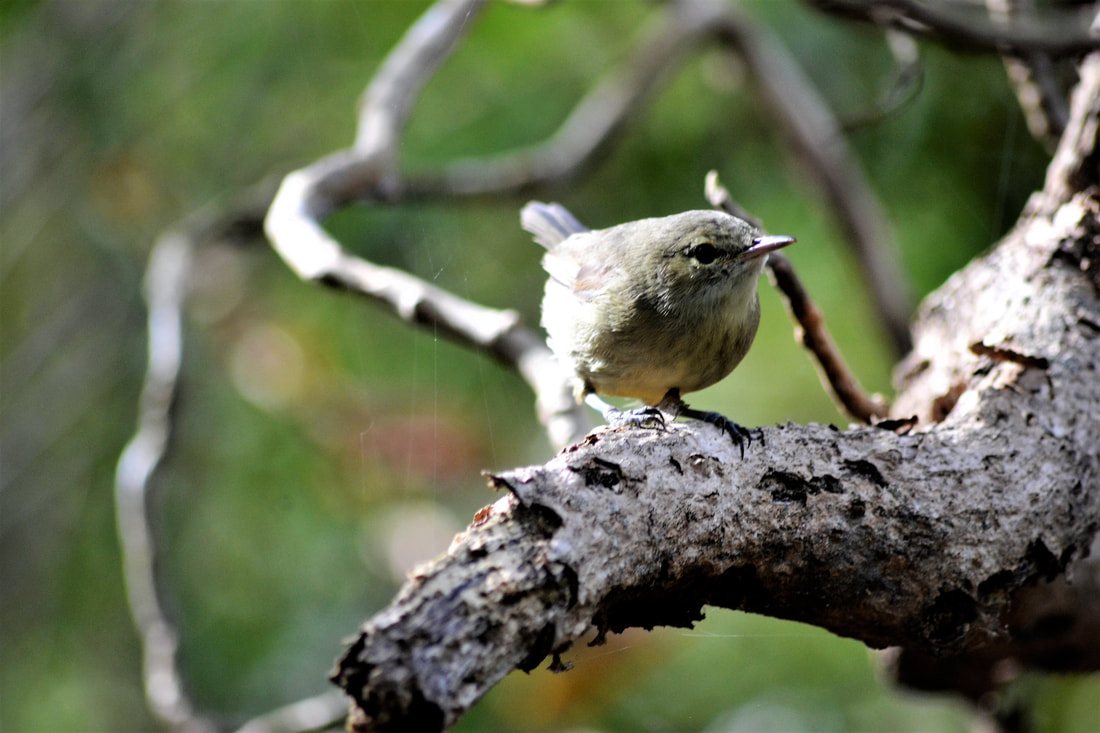|
FAD-Watch partner organisations Seychelles Fishing Authority (SFA), Islands Development Company (IDC), Island Conservation Society (ICS) and the Spanish Purse-seining organisatioon AGAC-OPAGAC met in Seychelles last month to review progress over the last 18 months since the FAD-Watch Programme’s inception. Fish aggregating devices (FADs) are man-made floating platforms set in the ocean by fishing vessels to attract fish and make them easier to catch. When this purpose drifts, as do the FADs, fragile marine life, coral reefs, lagoons and beaches can suffer. The FAD-WATCH project has developed a system which enables ICS Conservation Teams to monitor FADs entering 5- and 3 nautical mile buffer zones around Seychelles islands managed by IDC. FAD monitoring software, provided to ICS by FAD manufacturers SatLink and Marine Instruments, can report FAD positions at very short intervals. This means ICS can constantly track FADs and monitor their movements as they approach reef and land. If a FAD has drifted inside the 5 mile zone, ICS can then intervene to retrieve it prior to beaching. This prevents damage to coral reef, seagrass and beach habitats, as well as stopping the FAD becoming marine pollution or worse, a death trap for non-target marine species such as turtles, sharks and billfish. The objective is to obtain information on the impacts from FADs in Seychelles using real data, rather than theoretical estimates obtained from past studies. This will enable us to accurately quantify the number of potential FAD beaching events and evaluate the efficiency of the Project to date in preventing such destructive beaching events. ICS will be offering suggestions for more environmentally friendly and biodegradable FAD designs to further mitigate the issue. A Report on the number of FAD beaching events that have been avoided thanks to ICS intervention in 2017 will be published in early 2018. The report will also estimate the total number of potential FAD beachings which would have occurred in the absence of ICS interception. The first of its kind in the world, FAD-WATCH is a great example of successful collaboration between a coastal state administration, local NGOs, and the fishing industry. It is now time for other fleets to join the Project to help Seychelles achieve reef and beach environments that are totally free from FAD debris, by 2020.
2 Comments
Island Conservation Society, University of Seychelles’ Island Biodiversity and Conservation Centre (UniSey IBC) and SAFRING, the Southern African Region Birdringing Scheme, recently teamed up for a week on the Seychelles Nature Reserve of Aride Island to train conservation professionals in bird ringing, mist net techniques and data management.  Seychelles Magpie Robin chick being fitted with an identifying ring. Photo Nasreen Khan Seychelles Magpie Robin chick being fitted with an identifying ring. Photo Nasreen Khan Aride was chosen as the ideal location for the immersion course, thanks to the diversity of endemic land birds and migratory seabird colonies present, with the bonus of easy access from Praslin, good facilities and a variety of intact natural (and beautiful) habitats. Bird ringing and marking helps researchers learn more about bird biology and ecology, estimate population size, study migrations and identify possible threats. Tagging is particularly useful for species with a global range, such as migratory seabirds. Ringing also helps identify individuals in severely threatened populations. Participants worked intensely over the five days to ring 379 birds, mostly Seychelles Fodys, a tiny endemic bird that inhabits woodland and gardens. Other species tagged included Seychelles Sunbirds, Seychelles Warblers (Aride Island is home to over 80% of the world’s population), Madagascar Turtle Doves, White-Tailed Tropicbirds, Lesser Noddys, Brown Noddys, Fairy Terns, Ruddy Turnstones, Wedge-tailed Shearwaters and Tropical Shearwaters. The population of endangered Seychelles Magpie Robins including a new chick, were also ringed. The course was conducted prior to the popular Ecotourism season (November to May), to ensure minimal disturbance to the birds. Training was financed under the Critical Ecosystem Partnership Fund (CEPF) project: ‘Advancing Environmental Management Practices & Threatened Species Recovery through Partnerships with Private Sector’.
Thanks to CEPF, IBC UniSey, SAFRING and congratulations to all the participants on their new skills. A Reef Manta Ray Manta alfredi joins the ICS Poivre Team during last week's inaugural Coral Reef Monitoring Survey. Under the GOS-UNDP-GEF Outer Islands Project, the team collected baseline data on coral reef health and marine biodiversity. Ongoing annual surveys will compare the extent of bleaching, resilience and recovery in this fragile system. High marine biodiversity and abundance was observed, which will help classify potential Marine Protected Areas for ongoing conservation zoning in Seychelles' Marine Spatial Plan. ID photos of the unique spot pattern on the manta's underside have been sent to the Seychelles' Manta Ray Project, as part of ICS's collaboration with the Manta Trust to build a database of sightings in the Western Indian Ocean. Stay tuned!
|
Categories
All
Archives
June 2024
|

